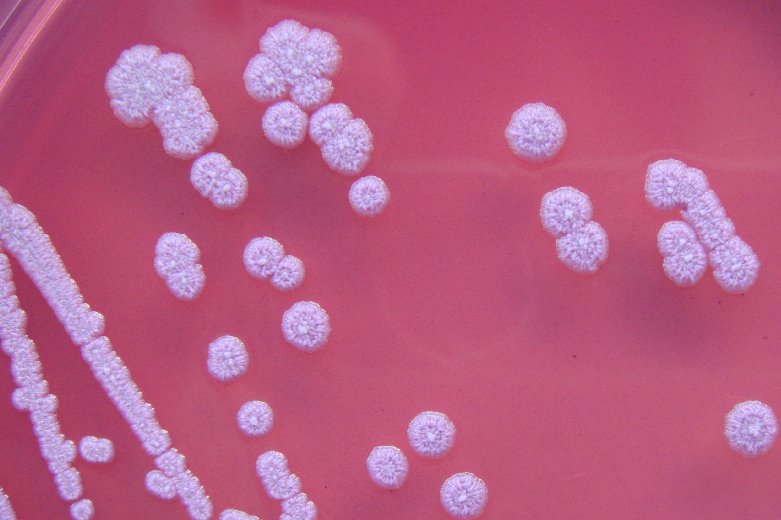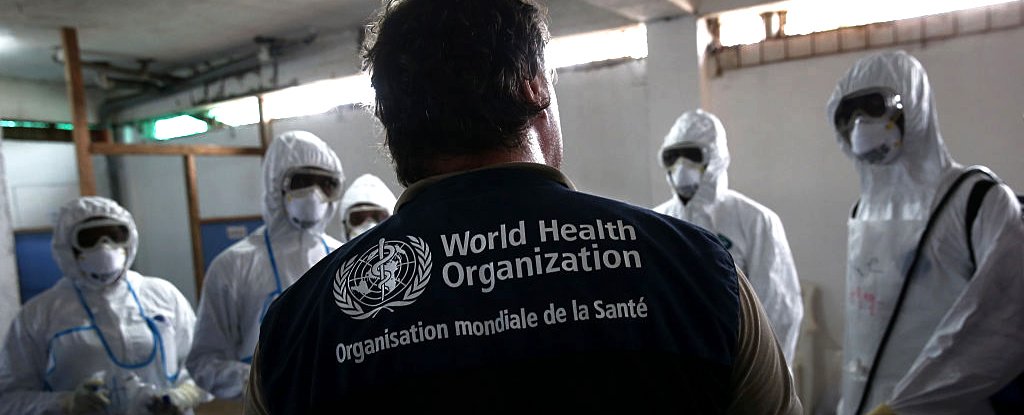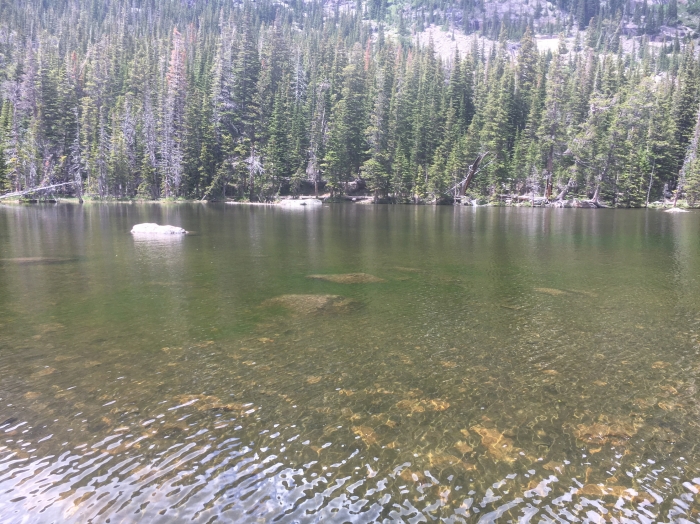
Colonies of the bacteria Burkholderia pseudomallei, which causes melioidosis, are pictured after four days' incubation on Ashdown's agar. Photo by Gavin Koh/Wikimedia
A potentially deadly antibiotic-resistant bacteria could be hiding in the dirt and water of the southernmost U.S. states, warns a new report from the U.S. Centers for Disease Control and Prevention.
The bacterial infection, called melioidosis, caused the lungs of a 63-year-old Texan to shut down in late 2018, forcing doctors to put him on a ventilator to save his life, the researchers said.
U.S. citizens who've caught melioidosis in the past typically picked it up in a foreign country, but this man had not recently traveled abroad, said Johanna Salzer, a veterinary medical officer with the CDC's Bacterial Special Pathogens Branch.
What's more, the bacteria that caused the man's melioidosis was genetically similar to two prior U.S. cases, one in Texas in 2004 and one in Arizona in 1999.
"We feel like this is evidence that it could be in the environment" in the United States, Salzer said. "We just need to find it."
Melioidosis is caused by the bacteria Burkholderia pseudomallei. Humans pick up the bacteria by inhaling dust or tiny droplets of water, or by dirt or water getting into an open wound, Salzer said.
There are an estimated 160,000 cases of melioidosis every year around the world, and 89,000 deaths, "which is really high for a disease a lot of people don't know about," Salzer said. It most commonly kills through blood poisoning or respiratory failure.
Melioidosis is caused by the bacteria Burkholderia pseudomallei. Humans pick up the bacteria by inhaling dust or tiny droplets of water, or by dirt or water getting into an open wound, Salzer said.
There are an estimated 160,000 cases of melioidosis every year around the world, and 89,000 deaths, "which is really high for a disease a lot of people don't know about," Salzer said. It most commonly kills through blood poisoning or respiratory failure.
RELATED Heartburn meds linked to drug-resistant bacteria
The fatality rate is estimated to exceed 70 percent if a person sick with melioidosis is left untreated, Salzer said.
There's no vaccine for the bacteria, and it is naturally resistant to many commonly used antibiotics. These include penicillin, ampicillin, cephalosporins, gentamicin, tobramycin and streptomycin, the researchers said.
Patients often require at least two weeks of IV drugs followed by several months of oral antibiotics to wipe out the infection.
The man, from Atascosa County, Texas, went to the hospital in November 2018. He'd had fever, chest pain and shortness of breath for three days, according to the report in the June issue of the CDC journal Emerging Infectious Diseases.
Doctors diagnosed him with pneumonia, and a blood test revealed a B. pseudomallei infection. He subsequently developed a large ulcer on his chest.
Four days after admission to the hospital, the man stopped breathing and was put on a ventilator. He was transferred to another hospital, which switched him to an antibiotic that was more effective against the bacteria.
The patient left the hospital after three weeks, but remained on daily antibiotics for another three months, according to the report. The disease also injured his kidney, which required dialysis three times a week.
These bacteria are most commonly found in the tropical climates of Southeast Asia, South and Central America, and northern Australia. It also has been detected in two U.S. territories, Puerto Rico and the U.S. Virgin Islands, Salzer said.
Previously, B. pseudomallei "has never been found in the environment in the continental United States," Salzer said.
Unfortunately, the handful of cases cited by the researchers seem to indicate that the bacteria might have made a home for itself in the southern United States.
"There is global modeling that the bacteria could survive, and survive well, in Texas and areas of Florida," Salzer said.
The CDC plans to partner with academic institutions to search for the bacteria in the continental United States, in much the same way that it was uncovered in Puerto Rico and the Virgin Islands, Salzer said.
Melioidosis can be tough to diagnose, Salzer said.
"It's been called the Great Mimicker or the Imitator Disease," Salzer said. "If you're not looking for it, it doesn't have really clear and reliable symptoms in all people."
Symptoms also can take months or years to develop, making it even more difficult for doctors to puzzle out their patient's illness, the report added.
The CDC experts urge doctors to test for the presence of the bacteria in patients in the southwestern United States who:
Have symptoms that seem to indicate pneumonia, blood infection, skin lesions or internal organ abscesses.
Have chronic diseases that put them at increased risk for dangerous infections, especially diabetes or kidney disease.
Don't improve after treatment with commonly used antibiotics.
More than 60 percent of melioidosis patients have diabetes, including the man in Texas, Salzer said.
Dr. Robert Glatter is an emergency medicine physician with Lenox Hill Hospital in New York City. "Lack of an international travel history should not rule out a diagnosis of melioidosis. People who also travel to the southwest U.S. are consequently at increased risk," he said.
"Increased health care provider awareness and education regarding the geographical distribution of this disease along with risk factors and pitfalls for managing melioidosis can help reduce mortality," Glatter added.
More information
The U.S. Centers for Disease Control and Prevention has more about melioidosis.














